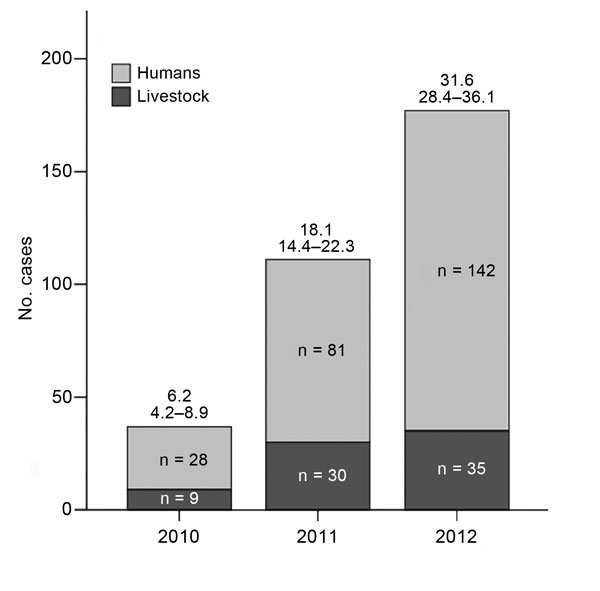Volume 20, Number 2—February 2014
Dispatch
Human Cutaneous Anthrax, Georgia 2010–2012
Figure 1

Figure 1. Total number of human cutaneous anthrax cases (light gray) and livestock cases (dark gray), Georgia, 2010–2012. Incidence rates (IRs) (95% CIs) of human cutaneous anthrax per million population are displayed above the bars.
1These authors contributed equally to this article.
Page created: January 17, 2014
Page updated: January 17, 2014
Page reviewed: January 17, 2014
The conclusions, findings, and opinions expressed by authors contributing to this journal do not necessarily reflect the official position of the U.S. Department of Health and Human Services, the Public Health Service, the Centers for Disease Control and Prevention, or the authors' affiliated institutions. Use of trade names is for identification only and does not imply endorsement by any of the groups named above.